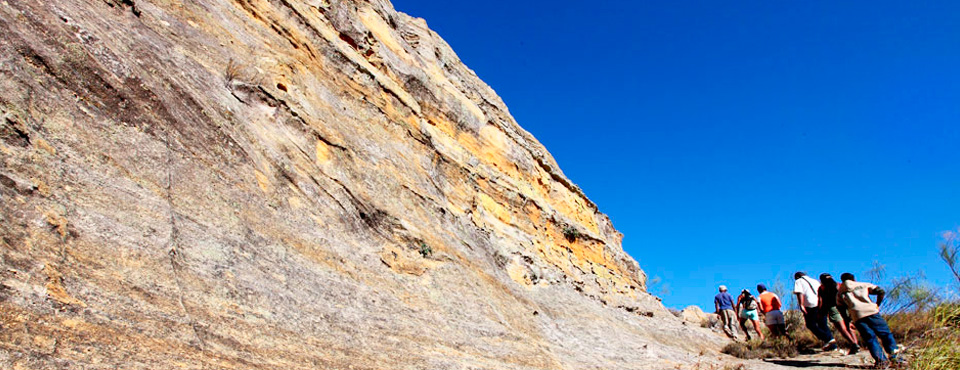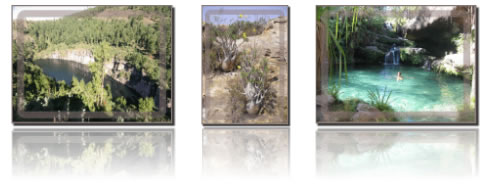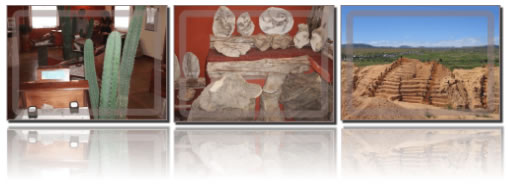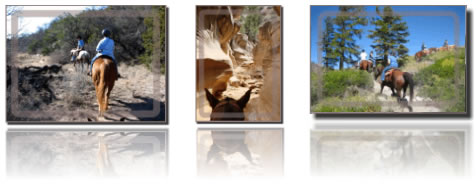Isalo National Park
Extract taken from a recent visitor to Isalo
Madagascar's Isalo National Park, often referred as the Jurassic Park, is arguably the best place to see ring-tailed lemurs and white sifakas dancing and jumping. It is one of the country's most dramatic and pleasant national parks.
This place should really be called 'National Isalo Jurassic Park' since the massive plateau and rocks were from the Jurassic era.
The park itself was very impressive, some say that it was a sort of Malagasy Colorado. The scenery nicely resembled the photography from 'Bonanza', the American TV series. It's been a pleasant recollection from my trip to the USA. It did not however resemble Colorado almost at all but rather Utah. All those people who said it was the Malagasy Colorado must have never been to Utah, where the Zion National Park, Natural Bridges and the Canyonland were amongst the best places I have visited.
Anyway, Isalo was a large place and one could easily spend a week or more trekking and hiking around and in the canyons, contemplating the scenery and trying to spot snakes, chameleons and lemurs. Lemurs were best spotted early in the morning, jumping on the trees and eating fruit.
During my first day in the park, I was fortunate to spot and photograph two Ring- tailed Lemurs, four small snakes and a pink chameleon. It's a pity I could not take the picture of the tranquillity and absolute silence, which were so overwhelming and the size of the open space was impressive as well.
Then, I also realised that Isalo was not only sand stones from Jurassic era, but also some interesting pools and waterfalls. They were hidden in valleys, smaller canyons and simply behind the rocks. After seeing numerous typical pictures from rocky Isalo, one was usually very surprised to see the extent of vegetation there. Most of the visible species of plants were actually known for growing only in close vicinity of fresh water, an actual scarce resource in this area of Madagascar.
On the second half of the first day, I went to see L'Oasis, which was kind of recommended by one of the guide books I was dragging along with me across the entire country.
Fenetre de L'Isalo, a hole in a rock is another attraction of the park, was heavily advertised almost everywhere and this actual place was even signposted, like very few things on Madagascar.
I went to see this hole at sunset. Unfortunately, the sun was not setting yet and it was a bit too harsh for viewing and taking pictures. The surrounding area however was captivating with vastness and tranquility, screaming silence!! As I was waiting for the sun to go down, I actually lied down for good half an hour on the ground under the Fenetre and thought of life, the universe and everything.
Although animal life is not the park's most prominent feature, there are a few species to look out for, including:
- catta lemur
- ring-tailed lemur
- red-fronted brown lemur
- blackhead lemur
- verreaux sifaka (an almost all-white lemur with a black snout and brown cap)
There are 55 species of birds, including:
- Benson's rock thrush
- Madagascar little grebe
- darter and white-faced duck
- Madagascar partridge
- Torotoroka scops-owl
- white-throated rail
- Madagascar coucal
- Madagascar wagtail
- Madagascar kestrel
Isalo's reptiles and frogs include:
- Oustalet's chameleon
- jewel chameleon
- spiny-tailed iguanid lizard (oplurus saxicola)
- stump-tailed chameleon
- brookesia ebenaui
- two locally prevalent frogs, the beautifully coloured scaphiophryne gottlebei and the mantidactylus corvus
Safari Highlights in Madagascar
Isalo National Park is a National Park in the Toliara Province of Madagascar. The park is known for its wide variety of terrain, including sandstone formations, deep canyons, palm-lined oases, and grassland. The closest town is Ranohira, and the closest city is Toliara. A local guide is required for visitors entering the park, and guides and porters can be hired in Ranohira. Treks in the park can last from several hours to a week or longer.The main threat to this park comes from illegal wildfires set in the park. The wildfires limit the extent of forest and maximize grasslands used by cattle.
Park National de Isalo was established in 1962 and covers 81,540 hectares of wildly eroded sandstone massif. The grassy plains are surrounded by sandstone ridges sculpted into various wild forms, and secluded in the rocks are many Sakalava Tombs. The Canyon des Singes ('Canyon of Monkeys') makes for an interesting day walk, and you will have a good chance of seeing sifakas (a common lemur) leaping through the trees.
You can also walk along the canyon to the Piscine Naturelle - a hot and thirsty walk but worth it for the breathtaking landscape along the way. The Grotte des Portugais is at the northern end of the park. The cave isn't worth seeing, but the surrounding Forêt de Sahanafa is beautiful, with natural springs and a lot of lemurs to enjoy.
Within the lodge
SPA for massage . PACHY CIRCUIT : 1.5 hour tracking between the mountains and to see magnificent endemic Pachypodium plants and a natural pool . GIORGIO'S WINDOW : come and see a real sunset on a fully secure site, and if you wish, enjoy an aperitif to the sound of live music.
Fauna & flora
82 species of birds, 33 species of reptiles, 15 species of frogs and 14 species of mammals are all known to inhabit the area, including 3 different species of Lemur (Ring-Tailed Lemurs, Red-fronted Lemurs and Verreaux's Sifakas). 340 different species of fauna are known to be in the park as well.
Ilakaka
Ilakaka is located on the road to Tuliare, south western Madagascar. The discovery of sapphire in the year of 1998 transformed the area. It is in the accesses of the downwards brook named IL Akaka that the firsts sapphires were found in 1998.The existence of gemmiferous minerals, including corundum was known for a long time in the sandstones of Isalo.
Horseback riding
Horse riding holidays in Madagascar are readily available. While native ponies can be found in a number of villages there are few professional riding stables offering riding lessons and trail rides. Some pony trekking is possible .Riding in the valleys and mountains and through the villages is an experience to be remembered. Our Hotel Guide will arrange all opportunities for you.
Star gazing
We invite you to experience what is quite possibly the most dramatic and stimulating scenery to be found anywhere, either on or off planet earth. Journey to the top of spectacular mountains, enjoy a mouthwatering meal, Sip a cocktail, watch the breathtaking sunset and stargaze at the heavens.
Natural History Trails
With remarkable scenery and an impressive variety of wildlife both terrestrial and marine, including Madagascar's history, exploring various trails is an excellent introduction to the Big Red Island. Here, on the fourth largest island in the world, isolated from the African continent for 30 million years, is a spectacular flora and fauna, unlike that found anywhere else in the world. Ninety-five percent of the lemurs and reptiles, 81 percent of the palms, and many birds are simply found nowhere else.
Booking Online
GDS CODES:
Amadeus : ON RLRISA
Sabre : ON 166706
Galileo : ON 72707
Worldspan : ON RLRIS
Country code: MG
Continent: Africa
Capital: Antananarivo
Languages: French, Malagasy
Airport related : TNR - TLE - RNR - MOQ
Electricity: 220V/50Hz
Currency :
Malagasy Ariary : MGA
Calculator
Credit Cards accepted: VISA
UTC/GMT : + 3 hours










